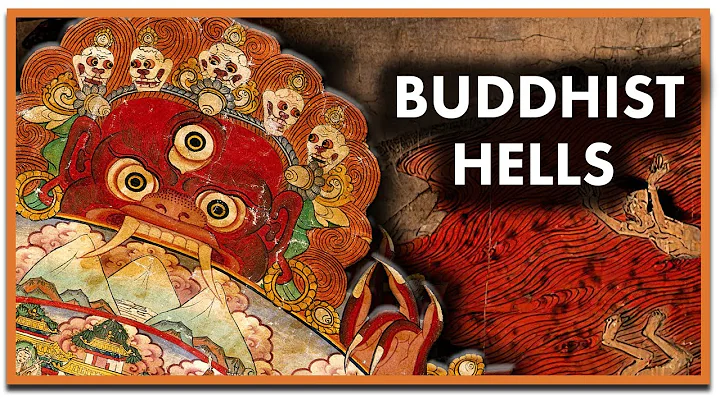
According to the " Shurangama Sutra ", "What is the world of sentient beings?
world is the migration and the boundary is the direction. You should know now that east, west, south, south, south, south, northeast, northwest, northeast, northwest, and upper and lower as the boundary, the past, future, and present are the world."
The land we live in is composed of the smallest "one world" (one world: centered on Mount Sumeru , plus the nine mountains and eight seas surrounding its four directions, four continents and the sun and moon, combined into one unit), and there are also small worlds, middle worlds, and big worlds. A vast world is the land transformed by a Buddha.
"world" and "world", in just two words, include flowing time and vast space. This combination of stability and fragility also reminds people -
The land we live in not only has a boundary between east, west, south, north, and bottom, but also has birth and death, not eternal existence.

Compared with the vast and magnificent world, Buddhist scriptures also have their own unit of measurement for extremely subtle and short time.
It takes "a moment" as the smallest unit of time, and a moment of thought and action will continue to fly away.
As the "Lingyun Sutra" says: "Thought meditate and observe carefully, and for a moment. You cannot stop every thought, so you know that my body will eventually disappear." Although
has different calculation standards for "moment" in different scriptures, its conversion to this day is zero point and a few seconds, which shows that it is short.

Cause and condition are all causes of the result, among which "cause" is the direct cause and "cause" is the indirect condition.
For example, seeds are "cause", soil, rain, dew, air, sunshine, fertilizer, and farming are "cause". Only by combining these causes and conditions can the seeds take root, sprout, blossom and bear fruit.
Therefore, it is not only the "starting point" that affects the result, but also the process in the middle is also very important.

The Buddhist scriptures contain many metaphors about impermanence, all of which are magnificent and fragile.
Commonly include dreams, illusions, shadows (called images in the mirror), yang flames (the phenomenon that the heat in the distance causes light to jump like flames);
sounds, water and moon, floating waves, void flowers (sick eyes, various flower-like illusions seen in the air), etc.

"Awareness" has two meanings: awareness and enlightenment: awareness means observing evil things, and enlightenment means enlightenment of wisdom.
"Buddha" is a complete and thorough "enlightened person", who can both be self-conscious and also be aware of him.

Buddhas and Bodhisattvas regard the world as the sea of suffering, and always make a vow to use Prajna as the ship to save sentient beings from the sea of suffering.
As the " Great Compassion Sutra " says: "Namo Great Compassion Guanyin, may I take the Prajna boat quickly."
Also, as the "Collected Rebirth of All Good Deeds" says: "Ride the compassionate voyage of Great Prajna, cross the suffering of the three beings, enter the sea of wishes of Samantabhadra , and cross the drowning of the Dharma Realm."

The tide of the sea is majestic and sometimes rises and falls, and is often used to describe the sound of Buddhas and Bodhisattvas preaching to the times, and can also be compared to the sound of singing and reciting scriptures like the tide of the sea.
In addition to the "Sea Tide Sound", the classics also used "Cloud Thunder Sound" and "Lion Roar" to describe the Buddha statement.

"Game" gives people a sense of relaxation and freedom.
In Buddhism, this shows that the Buddhas and Bodhisattvas can be free and able to save sentient beings without any obstacles and as they wish.
In the statue, there is also an image of a Buddha and Bodhisattva sitting cross-legged and one leg drooping.

Practitioners often refer to Buddhist practitioners.
In the process of learning and practicing, "action" is an indispensable part. It requires us to follow the body, speech and mind of the Bodhisattva after believing in and understanding the Dharma, and to correct our words and deeds.
As the saying goes, "Just speak but not practice false styles", if you only believe in understanding but do not implement them, you will still follow your habits when facing troubles, and you will not be able to gain real benefits from it.

"Douzhuo" is a different name for "Toutuo", which is a kind of ascetic practice of monks.
Through this practice, you can eliminate the greed and troubles of food, clothing, residence, etc., and restore your true nature, just like revitalizing clothes and removing dust, and returning to purity.
is often used to encourage, meaning to cheer up, strive for progress, etc.

In Buddhism, "dust" not only refers to dust, but also includes the objects touched through the six senses of "eyes, ears, nose, tongue, body, and mind", namely "color, sound, fragrance, taste, touch, and Dharma".
This " Six Dusts " will cover our originally pure nature like dust, causing many delusions and troubles.
Through daily practice, you can "wipe it frequently and not cause dust." That is, "spotless".

It is a synonym for "unprecedented". As the Lotus Sutra says: "We are happy and excited today when we hear the Buddhist teachings, and we have never had it."
It is difficult to get the human body now, and the Buddhist teachings are hard to hear. We should diligently and diligently not let go of the good relationship.
Conclusion
In addition to the above words, there are also "praise, fate, achievement, repentance" and so on.
Thanks to the in-depth understanding and exquisite translation of great masters, these words retain the teachings while being full of concise and profound Chinese beauty.
When such words are beaded into chains, the flowing cleverness and wise and wonderful philosophy are gathered into Buddhist verses and scriptures, which are worth our repeated recitation and careful consideration.
Source: Shanghai Jade Buddha Temple







![[English] Who Am I - Lecture 1 - Ven. Guan Cheng - DayDayNews](https://i.ytimg.com/vi/KU0fUs2It5o/hq720.jpg?sqp=-oaymwEcCNAFEJQDSFXyq4qpAw4IARUAAIhCGAFwAcABBg==&rs=AOn4CLDFpQUN_QwRfC7bmP4sUadq-RcYdg)
![A Moving Masterpiece 清明上河图 [English narration] - DayDayNews](https://i.ytimg.com/vi/kxff-4GktOI/hqdefault.jpg?sqp=-oaymwEcCOADEI4CSFXyq4qpAw4IARUAAIhCGAFwAcABBg==&rs=AOn4CLBtHGLeUpJNCYDJYnZTuISQ1N5Vag)


